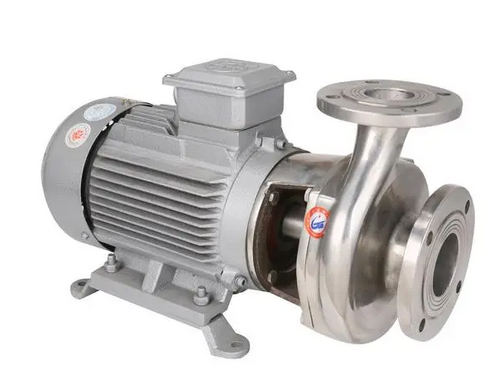System Optimization of Centrifugal Pumps
System optimization of centrifugal pumps is a comprehensive process that aims to improve the performance, efficiency, stability and reliability of the pump while reducing energy consumption and maintenance costs. The following is a detailed explanation of centrifugal pump system optimization from different aspects:
1. Design and manufacturing optimization
Impeller optimization
Blade shape and number: Optimize the shape and number of blades to improve the flow state of the fluid and reduce vortex and energy loss.
Outlet negative angle: By optimizing the outlet negative angle, the outlet area of the impeller is increased, thereby improving the flow and efficiency of the pump.
Vortex finder optimization
Improve the structure of the vortex finder, reduce the radial gap between the vortex finder and the inlet pipe diameter, increase the relative speed of the rotor, reduce the intensity of the inlet swirl and the intensity of the reverse wire cut at the outlet of the vortex finder, so as to improve the inlet flow field and improve the efficiency and stability of the pump.
Flow component optimization
Bend optimization: Reduce the number and curvature of the bends, or add guide plates and regulating plates at the bends to optimize the flow state and reduce resistance.
Surface treatment: Reduce the roughness of the surface of the flow components, reduce friction resistance and improve the efficiency of the pump through coating and frosting.
Optimization of axial clearance
Control the axial clearance between the rotor and the pump casing to avoid energy loss caused by too large a clearance and friction and wear caused by too small a clearance.
2. Optimization of operation strategy
Minimum energy consumption operation line
Study and draw the energy utilization flow chart of the centrifugal pump system, and establish a mathematical model of minimum energy consumption operation control according to the energy demand of the system to achieve energy-saving operation of the system.
Water supply system control
For systems with uncertain water use patterns, a linear supply strategy is adopted, that is, a straight line connecting the operating point of the pump at the maximum flow rate and the static head point that meets the minimum demand of the system is used to achieve energy saving.
Optimization of scheduling model
Considering the differences in maintenance costs under different operating conditions during the operation of the water pump, the vibration intensity of the pump is used to evaluate these differences, and an objective function that reflects the operating status of the water pump is established to form a new scheduling model, so that the centrifugal pump can operate in a low vibration state and reduce maintenance costs.

3. Monitoring and maintenance optimization
Speed monitoring
Real-time monitoring of the speed of the centrifugal pump ensures that it operates within the set speed range to avoid performance degradation or equipment damage caused by abnormal speed.
Vibration and noise monitoring
Monitor the vibration and noise levels of the pump, detect and deal with potential problems in a timely manner, and prevent the expansion of faults.
Regular maintenance
Develop and implement regular maintenance plans, including routine maintenance work such as cleaning, lubrication, and tightening, to ensure the long-term stable operation of the pump.
4. Technology application and optimization
CFD simulation technology
Use computational fluid dynamics (CFD) simulation technology to simulate and analyze the design of the centrifugal pump, find out the key areas of energy loss, and optimize the design accordingly.
Intelligent control system
Introduce intelligent control systems, such as PLC, frequency converter, etc., to realize automatic control and remote monitoring of centrifugal pumps, and improve the intelligence level and operation efficiency of the system.




